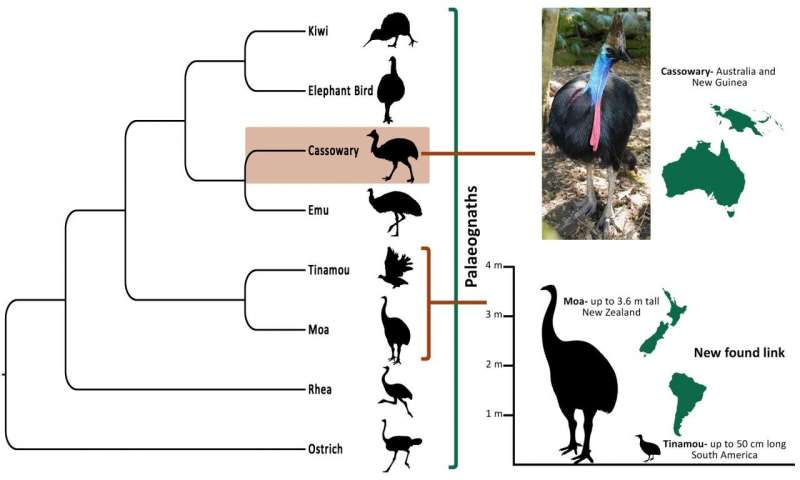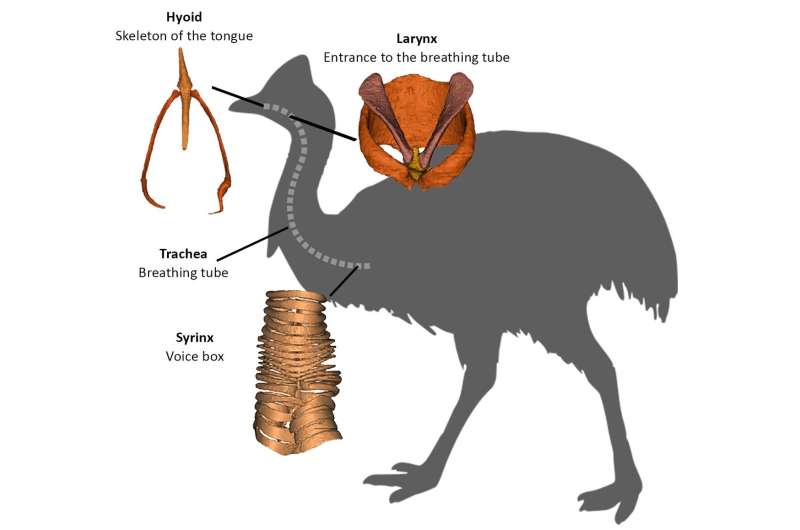Inside story on cassowary evolution

One of the largest living birds, the Southern Cassowary, has a simple throat structure similar to the fellow Australian emu. Now new research confirms a common link between the cassowary and small flighted South American tinamou—and even the extinct large New Zealand moa.
The cassowary, a colourful yet solitary big bird from far north Queensland and Papua New Guinea, has been studied for centuries but now Flinders University researchers have studied the internal features of its throat to confirm a 'missing link' in its evolution.
Focusing on the syrinx, hyoid and larynx, which are used for breathing, eating and vocalising, advanced technologies and 3-D digital modelling techniques including non-invasive CT scanning have led Flinders scientist to fill in some gaps in the evolution of the Australian birds and their relations in more distant places.
The results have been published in the international journal BMC Evolutionary Biology.
"What surprised the authors was that despite the vast variation in locations of the cassowaries and other primitive living birds, the extinct moa and South American tinamou are very similar," says lead author Phoebe McInerney.
"Scanning lets us see details that we wouldn't be able to otherwise, including the shapes of the internal structures, without causing damage to them," she says.

Usually hidden in dense Australian and PNG rainforest, the colourful cassowary is part of the palaeognaths group of primitive birds, which includes the largest bird in the world, the African ostrich, the emu, moa, tinamou, kiwi, rhea and extinct Madagascan elephant bird.
The latest study confirms scepticism from separate recent DNA analysis pointing to the close relationship between the cassowary, moa and tinamou—with the large, flightless moa a stark contrast to the small, flighted partridge-like tinamou.
"The unexpected family tree for primitive birds based on genomic evidence is looking more and more convincing," says co-author Professor Michael Lee, from Flinders University and the South Australian Museum.
"The morphology of the often-overlooked larynx has shown to be far superior than the other anatomical traits biologists previously used to infer evolutionary relationships, such as wings or leg sizes," says another co-author Associate Professor Trevor Worthy.
The researchers conclude that the study emphasises the importance of small organs and other internal details often ignored in the past when studying evolutionary relationships among birds.
More information: Phoebe L. McInerney et al, The phylogenetic significance of the morphology of the syrinx, hyoid and larynx, of the southern cassowary, Casuarius casuarius (Aves, Palaeognathae), BMC Evolutionary Biology (2019). DOI: 10.1186/s12862-019-1544-7
Journal information: BMC Evolutionary Biology
Provided by Flinders University



















